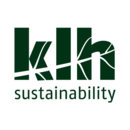Environment offences: Definitive guideline
To the question “Do you comply with your legal requirements?” companies are most likely to respond “Yes of course”.
However when you start looking for evidence of compliance, often the initial enthusiastic “Yes” turns out to be riddled with caveats: “Yes but legislation is so convoluted it is difficult to demonstrate compliance in practice” or “Yes because I haven’t been prosecuted so far so I must be doing the right thing” and even “Yes but anyway a fine costs less than complying with regulations…”.
A large number of companies do not invest sufficient resources to monitor legal compliance in their organisation either because they do not fully understand their risks or do not care due to the perceived lack of consequences for breaching legislation.
This may change with the introduction of the Environment offences: Definitive guideline, which came into force in July 2014. The guideline is a 12-step framework courts use to hand out fines in a consistent and transparent way. The fines vary according to the turnover, level of culpability, harm caused and any potential aggravating factors. The court will take into account the financial circumstances of the organisation to ensure the fine is proportionate so it has a real economic impact and acts as a deterrent to offend.
The guideline clearly states that “it should not be cheaper to offend than to take the appropriate precautions”. For example, companies with a turnover of over £50m that cause a category 1 environment offence deliberately will face a fine of up to £3m.
The legal penalties associated with breaching legislation are only the tip of the iceberg. Additional and greater financial impacts are likely to follow: negative publicity, legal costs, potential increase in insurance premiums and more importantly loss of contracts.
A poll carried out by the Cabinet Office and Social Enterprises UK in September 2014, surveying 2,070 British adults, revealed that three-quarters of Britons are less likely to buy from a business that damages the environment. Increasingly clients are becoming savvier about environmental and wider sustainability issues.
Until relatively recently, tenderers could score well if they were able to demonstrate basic environment compliance, this is not the case any more. Clients now expect to see evidence of sustainability best practice, and a conviction for breaching legislation will definitely be a show-stopper at the Pre-Qualification Questionnaire (PQQ) stage.
This article was created by --KLH Sustainability 28 January 2015.
[edit] Related articles on Designing Buildings Wiki
Featured articles and news
RTPI leader to become new CIOB Chief Executive Officer
Dr Victoria Hills MRTPI, FICE to take over after Caroline Gumble’s departure.
Social and affordable housing, a long term plan for delivery
The “Delivering a Decade of Renewal for Social and Affordable Housing” strategy sets out future path.
A change to adoptive architecture
Effects of global weather warming on architectural detailing, material choice and human interaction.
The proposed publicly owned and backed subsidiary of Homes England, to facilitate new homes.
How big is the problem and what can we do to mitigate the effects?
Overheating guidance and tools for building designers
A number of cool guides to help with the heat.
The UK's Modern Industrial Strategy: A 10 year plan
Previous consultation criticism, current key elements and general support with some persisting reservations.
Building Safety Regulator reforms
New roles, new staff and a new fast track service pave the way for a single construction regulator.
Architectural Technologist CPDs and Communications
CIAT CPD… and how you can do it!
Cooling centres and cool spaces
Managing extreme heat in cities by directing the public to places for heat stress relief and water sources.
Winter gardens: A brief history and warm variations
Extending the season with glass in different forms and terms.
Restoring Great Yarmouth's Winter Gardens
Transforming one of the least sustainable constructions imaginable.
Construction Skills Mission Board launch sector drive
Newly formed government and industry collaboration set strategy for recruiting an additional 100,000 construction workers a year.
New Architects Code comes into effect in September 2025
ARB Architects Code of Conduct and Practice available with ongoing consultation regarding guidance.
Welsh Skills Body (Medr) launches ambitious plan
The new skills body brings together funding and regulation of tertiary education and research for the devolved nation.
Paul Gandy FCIOB announced as next CIOB President
Former Tilbury Douglas CEO takes helm.
UK Infrastructure: A 10 Year Strategy. In brief with reactions
With the National Infrastructure and Service Transformation Authority (NISTA).























